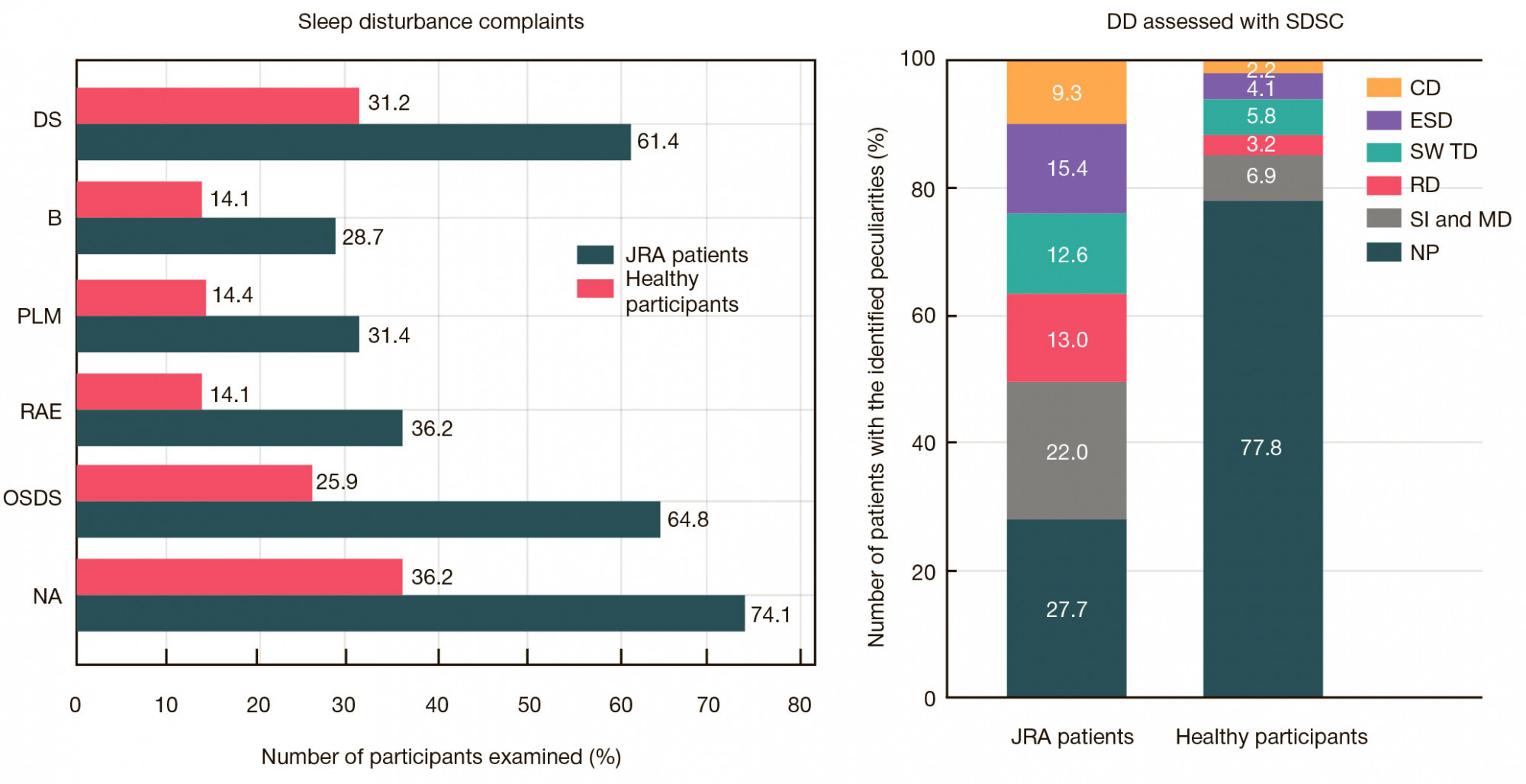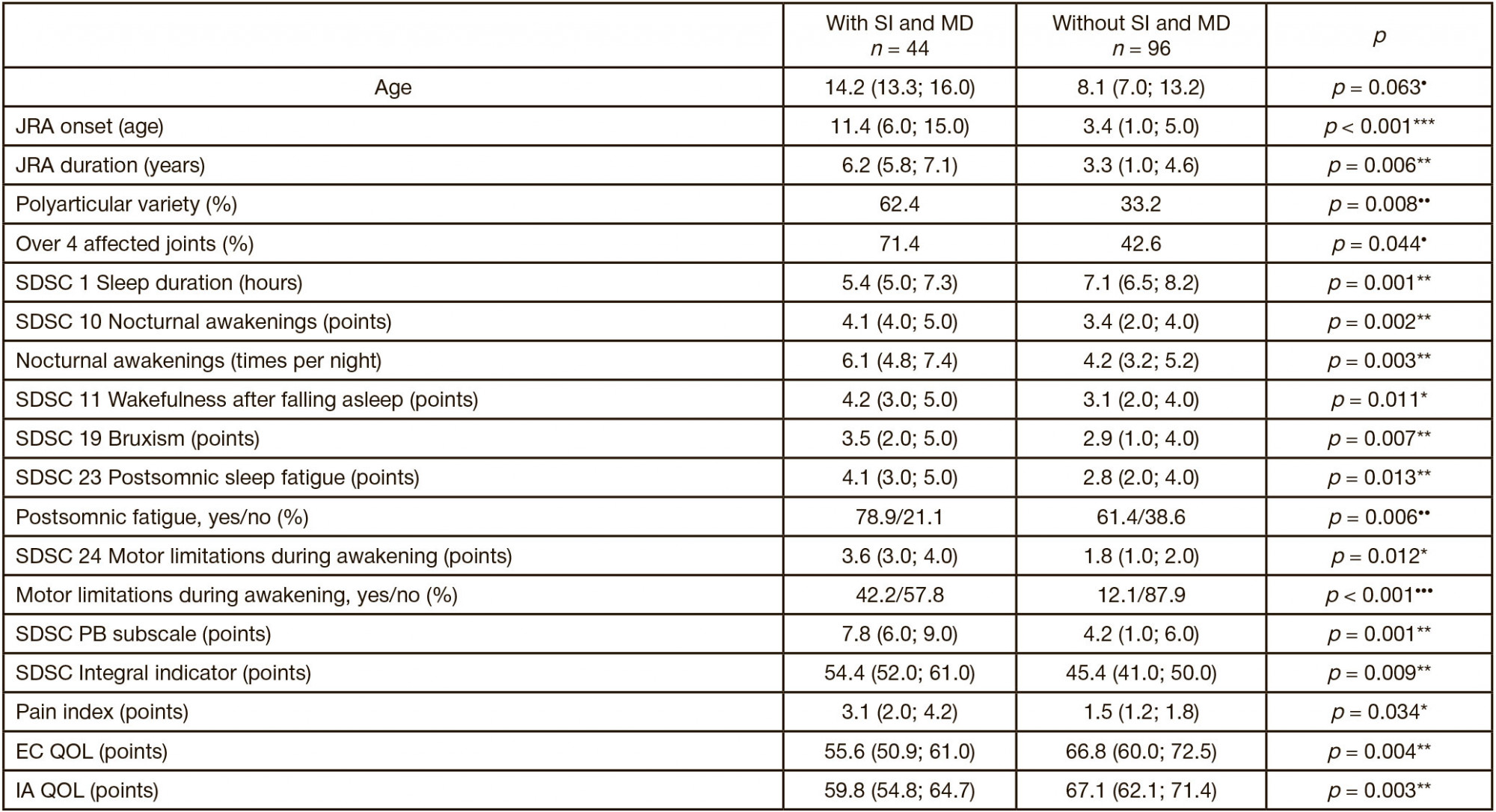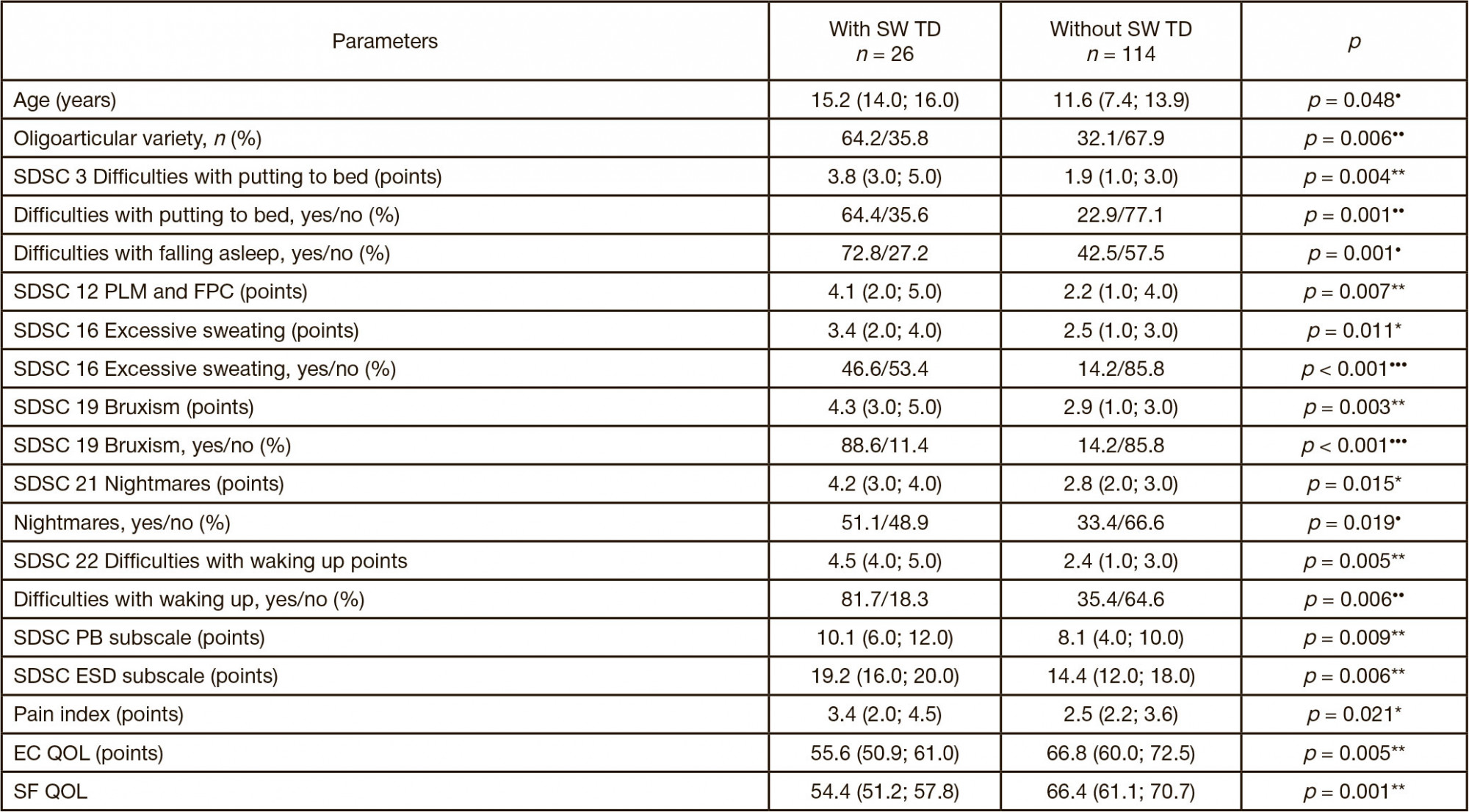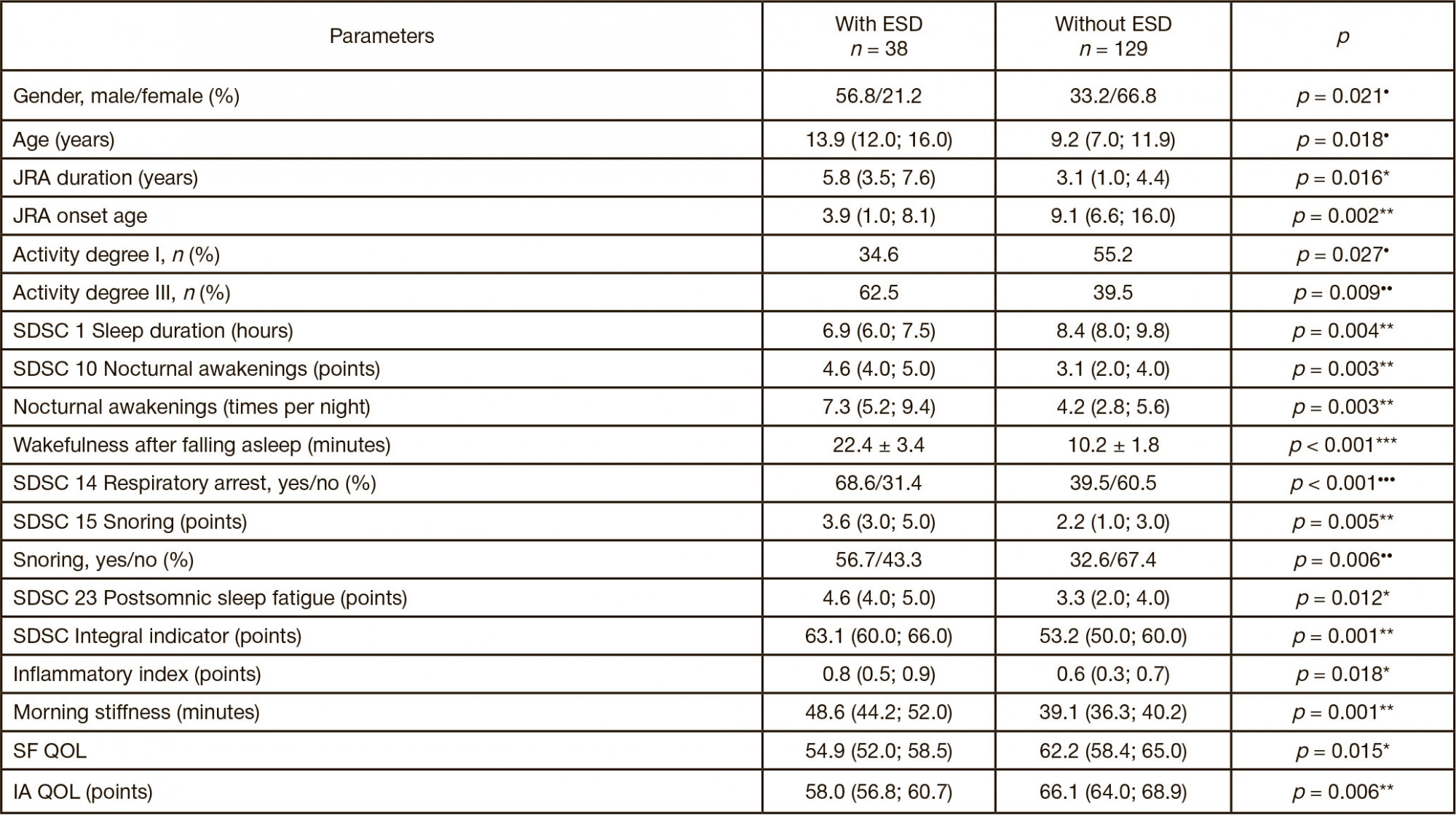
This article is an open access article distributed under the terms and conditions of the Creative Commons Attribution license (CC BY).
ORIGINAL RESEARCH
Dissomic disorders associated with juvenile rheumatoid arthritis: impact on quality of life
V.I. Vernadsky Crimean Federal University, Simferopol, Russia
Correspondence should be addressed: Leya E. Sorokina
Lenina boulevard, 5/7, 295006, Simferopol, Republic of Crimea; ur.liam@anikoros.ayel
Compliance with ethical standards: the study was approved by the ethical committee of the S.I. Georgievsky Medical Academy of Vernandsky Crimean Federal University (Federal State Autonomous Educational Institution), minutes protocol #9 of October 14, 2019); it was planned and conducted in accordance with the Declaration of Helsinki, with parents of all JRA patients and healthy children included in the study signing a voluntary informed consent.
Author contribution: AA Elezarov, AS Kucheryavyy — data collection, analysis and interpretation; LN Gumenyuk — research concept and design; LE Sorokina, SR Arifdzhanova, OYu Gerbali — article preparation.





